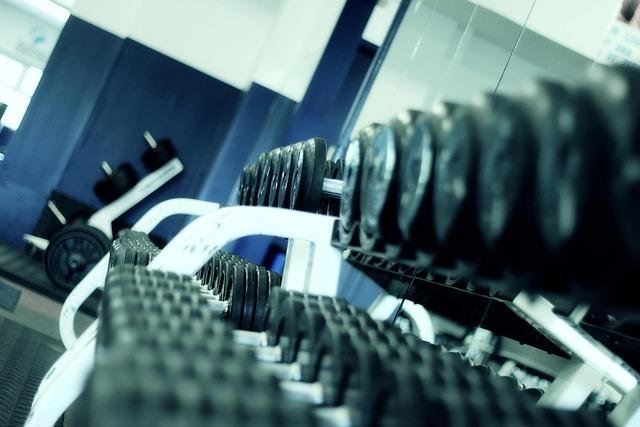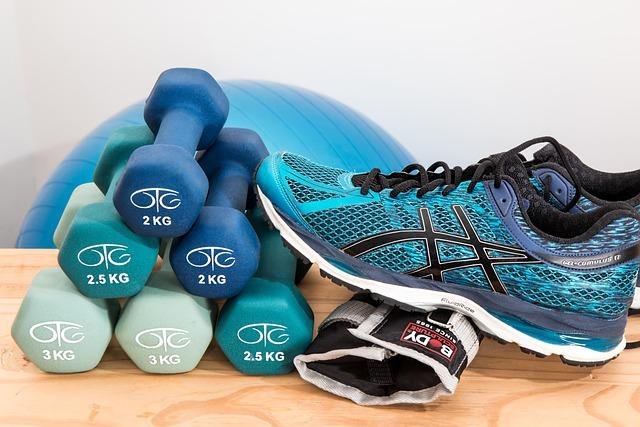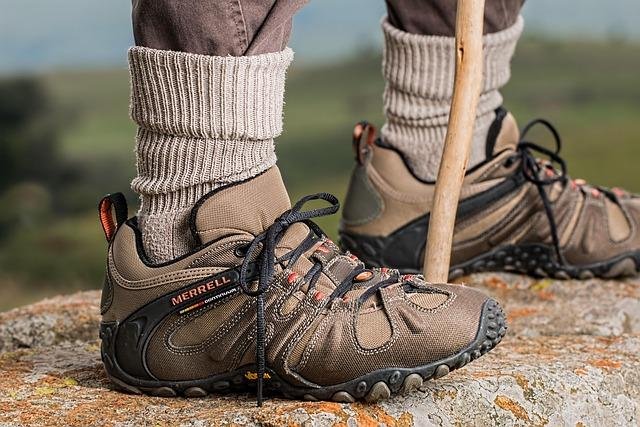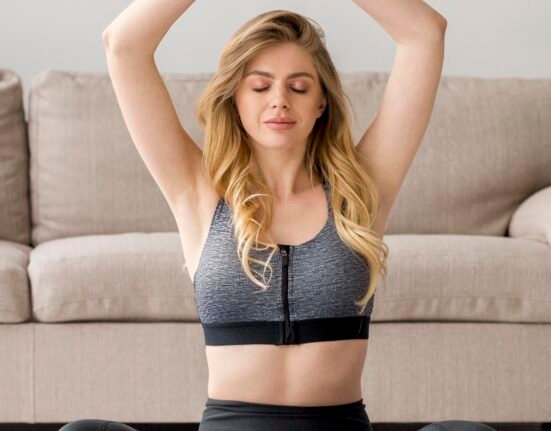As the seasons shift, so do the rhythms of our lives—and so should our workout routines. Just as nature adapts to changing weather and daylight, tailoring your exercise plan to the nuances of each season can bring balance, boost motivation, and enhance results. Whether it’s embracing the warmth and longer days of summer or finding ways to stay active amidst winter’s chill, adapting your workouts to seasonal changes invites a fresh perspective on fitness. In this article, we explore how to align your exercise habits with the ebb and flow of the year, ensuring that your routine remains both effective and enjoyable all year round.
Table of Contents
- Choosing the Right Exercises to Match Seasonal Weather
- How to Adjust Your Training Intensity Throughout the Year
- Incorporating Seasonal Nutrition to Boost Workout Performance
- Gear and Clothing Tips for Comfort and Safety in Every Season
- Outdoor vs Indoor Workout Strategies for Changing Conditions
- Staying Motivated and Avoiding Common Seasonal Fitness Pitfalls
- Q&A
- The Way Forward

Choosing the Right Exercises to Match Seasonal Weather
As the seasons change, so should your exercise choices to keep your routine both effective and enjoyable. In warmer months, taking advantage of outdoor activities can invigorate your workouts. Swimming, hiking, and cycling are excellent ways to stay active while soaking up the sun. These activities not only boost cardiovascular health but also add variety to your regimen, ensuring you don’t hit a plateau. Don’t forget to stay hydrated and protect your skin when exercising outside under the summer sun.
When the weather turns colder, it’s essential to adapt by focusing on workouts that can be comfortably performed indoors or within sheltered environments. Strength training, yoga, and indoor cardio sessions can maintain your fitness levels without exposing you to harsh elements. To assist in deciding the best exercises for each season, consider the table below, which offers a quick guide for balancing your workout intensity and environment suitability.
| Season | Ideal Exercise Types | Key Considerations |
|---|---|---|
| Spring | Jogging, Outdoor Yoga, Gardening | Mild weather, fresh air |
| Summer | Swimming, Cycling, Beach Volleyball | Heat management, hydration |
| Autumn | Hiking, Dance Classes, Light Weights | Cooling weather, flexible layers |
| Winter | Indoor Cardio, Strength Training, Pilates | Warmth, consistency indoors |

How to Adjust Your Training Intensity Throughout the Year
Varying your training intensity with the seasons isn’t just smart—it’s essential for sustainable progress and injury prevention. During the colder months, when outdoor activities may be limited and energy levels tend to dip, focus on lower-intensity endurance workouts and controlled strength training. This period is ideal for building foundational fitness without overstressing your body. Incorporate activities like brisk walking, steady cycling, or yoga to maintain consistency while allowing ample recovery. When transitioning into warmer months, gradually ramp up the intensity with more dynamic exercises like interval training, hill sprints, or outdoor circuit workouts to harness your increased energy and boost cardiovascular capacity.
Managing your workout intensity also involves listening to your body and aligning with natural rhythms, which can be summarized effectively:
- Spring: Moderate intensity, with a focus on mobility and flexibility to prepare for seasonal activities.
- Summer: Higher intensity sessions, taking advantage of longer daylight and increased stamina.
- Fall: Balanced moderate-intensity workouts, blending strength and endurance as you transition indoors.
- Winter: Low to moderate intensity emphasizing recovery, core strength, and injury prevention.
| Season | Recommended Intensity | Workout Focus |
|---|---|---|
| Winter | Low to Moderate | Endurance, Core Stability |
| Spring | Moderate | Flexibility, Mobility |
| Summer | High | Speed, Power |
| Fall | Moderate | Balance Strength & Endurance |

Incorporating Seasonal Nutrition to Boost Workout Performance
As the seasons change, so do our bodies’ nutritional requirements, directly impacting workout efficiency and recovery. Embracing seasonal nutrition means fueling your body with the freshest, most nutrient-dense foods available at that time of year. In spring, focus on light and hydrating options such as leafy greens, asparagus, and strawberries, which help flush out toxins and boost energy. Moving into summer, prioritize foods rich in electrolytes like watermelon, cucumbers, and tomatoes to stay hydrated and maintain muscle function. During the cooler fall months, root vegetables and squash provide sustained energy and warmth, while winter calls for vitamin-packed citrus fruits and hearty legumes to support immune health and muscle repair.
- Seasonal favorites enhance nutrient intake: Eating in tune with nature maximizes antioxidants, vitamins, and minerals.
- Improved hydration: Seasonal fruits and vegetables with high water content help maintain electrolyte balance during exercise.
- Optimized recovery: Targeted nutrients promote faster muscle healing and reduce inflammation.
| Season | Key Foods | Workout Benefit |
|---|---|---|
| Spring | Spinach, strawberries, asparagus | Energy boost, detoxification |
| Summer | Watermelon, cucumber, tomatoes | Hydration, electrolyte balance |
| Fall | Butternut squash, carrots, apples | Sustained energy, warmth |
| Winter | Citrus, kale, lentils | Immune support, muscle repair |
By tuning into seasonal nutrition, not only do you enjoy greater variety and freshness, but you also lay a solid foundation for enhanced workout performance. It’s a simple yet powerful way to nourish muscles, maintain stamina, and recover smarter throughout the year.

Gear and Clothing Tips for Comfort and Safety in Every Season
Choosing the right gear for your workouts throughout the year can significantly enhance both comfort and safety. For warmer months, opt for moisture-wicking fabrics that help keep sweat off your skin, paired with breathable shoes designed for maximum airflow. Don’t forget a lightweight hat and UV-protection sunglasses to shield yourself from the sun’s rays. As the seasons shift, layering becomes essential: start with a moisture-wicking base layer, add an insulating middle layer, and finish with a waterproof or wind-resistant outer layer to combat unpredictable weather. Reflective materials or LED accessories are smart investments for shorter daylight hours, ensuring visibility during early mornings or dusk sessions.
When assembling your workout wardrobe, consider a flexible checklist that adapts to your planned activity and local climate. Below is a quick guide to season-specific essentials:
| Season | Key Gear | Safety Tips |
|---|---|---|
| Spring | Breathable jacket, moisture-wicking shirt, running shoes | Watch for slippery trails; layer for fluctuating temps |
| Summer | Lightweight tank, sunhat, UV-blocking sunglasses | Hydrate often; avoid peak sun hours |
| Fall | Insulating fleece, windbreaker, sturdy sneakers | Wear reflective gear; expect chilly mornings |
| Winter | Thermal base layer, insulated gloves, waterproof boots | Layer smartly; be cautious of icy surfaces |
Keep in mind that adjusting your clothing and accessories based on these seasonal essentials helps maintain optimum performance and reduces the risk of injury, no matter the weather conditions. Whether you’re trail running, cycling, or hitting the gym, thoughtful gear choices are your best ally in staying comfortable and safe all year round.

Outdoor vs Indoor Workout Strategies for Changing Conditions
When the weather shifts, so should your exercise environment. Outdoor workouts offer fresh air, natural light, and an invigorating change of scenery that can boost your mood and energy levels. However, unpredictable weather like rain, wind, or extreme heat demands flexibility in your exercise plan. Opt for dynamic workouts that adjust easily—a brisk walk can turn into an indoor treadmill session, or a yoga flow can be replicated inside with minimal space. Consider layering clothing and using gear designed for various conditions to stay comfortable. Flexibility is key to keeping motivation high without compromising your health.
Conversely, indoor workouts provide a controlled climate and equipment variety, making them ideal during harsher seasons. Benefits include steady temperatures, fewer distractions, and access to machines and weights that help maintain strength and endurance. Incorporate diverse indoor activities like spinning, Pilates, or HIIT to combat monotony. Below is a simple comparison to help tailor your routine:
| Aspect | Outdoor Advantage | Indoor Advantage |
|---|---|---|
| Environment | Natural surroundings, fresh air | Controlled temperature, weather-proof |
| Equipment | Bodyweight, minimal gear | Variety of machines and weights |
| Flexibility | Requires weather adjustments | Consistent routine possible |
- Tip: Combine both styles seasonally for a well-rounded fitness regimen.
- Strategy: Use indoor days as active recovery or strength-training focused sessions.
- Mindset: Embrace changing conditions to keep your body and mind adaptable.

Staying Motivated and Avoiding Common Seasonal Fitness Pitfalls
Keeping momentum throughout the year can be challenging, especially when weather changes disrupt your usual routine. To stay energized, embrace flexibility in your workout schedule and diversify your activities to keep things fresh. For example, swapping outdoor runs for indoor yoga or strength training during colder months can keep your body engaged without the chill factor discouraging you. Additionally, setting small, achievable goals tailored to each season’s unique challenges helps maintain a sense of accomplishment and boosts your confidence.
Beware of common pitfalls such as burnout from overtraining during the warmer months or the temptation to skip workouts when daylight decreases. Creating a realistic plan that incorporates rest days, proper hydration, and varied intensity levels ensures your fitness journey is sustainable year-round. Below is a simple guide to help you recognize and avoid these hurdles:
| Common Seasonal Pitfall | How to Avoid |
|---|---|
| Burnout from summer overexertion | Incorporate active recovery and cross-training |
| Reduced motivation in colder months | Schedule indoor group classes or virtual workouts |
| Skipping workouts during holiday season | Plan shorter, high-intensity sessions for busy days |
Q&A
Q: Why should I adapt my workout routine according to the seasons?
A: Each season brings unique environmental conditions and lifestyle changes that affect your body’s performance and motivation. Adapting your workout routine helps optimize results, prevent injury, and keeps exercise enjoyable throughout the year.
Q: How can I adjust my workouts in the winter months?
A: Winter’s colder temperatures call for a focus on indoor activities or bundled-up outdoor sessions. Incorporate strength training, yoga, or fitness classes to maintain muscle and flexibility. If running outside, dress in layers, warm up thoroughly, and shorten your workouts if necessary for safety.
Q: What makes spring the ideal season to switch up my routine?
A: Spring signals renewal and increased daylight, perfect for outdoor activities like jogging, hiking, or cycling. Use this time to increase cardio and endurance training as your body adapts to moderate temperatures and longer days.
Q: How should workouts change when summer arrives?
A: Summer’s heat means prioritizing hydration, scheduling workouts during cooler times (early morning or evening), and lowering workout intensity to avoid heat exhaustion. Swimming and water sports are excellent summer-friendly options that cool you down while giving a full-body workout.
Q: What is the best way to transition my exercise routine in the fall?
A: Fall’s crisp air and falling temperatures make it perfect for combining outdoor cardio with strength training. It’s also a good time to prepare your body for the upcoming winter by focusing on endurance and flexibility, while enjoying activities like trail running or outdoor boot camps.
Q: Can seasonal foods impact my workout performance?
A: Absolutely! Seasonal produce offers fresh, nutrient-rich options that support your workouts. In summer, enjoy hydrating fruits like watermelon, while root vegetables and hearty greens in winter can fuel strength and recovery.
Q: How can I stay motivated to exercise year-round despite seasonal changes?
A: Set seasonal goals that align with your routine’s adjustments—like mastering a yoga pose in winter or training for a fall 5K. Mixing up workouts, joining seasonal classes, or finding an exercise buddy can also boost motivation and help you embrace the changing seasons.
The Way Forward
As the seasons shift, so too should the rhythm of your workouts—each change in weather and daylight offers a new opportunity to challenge your body in fresh and inspiring ways. By tuning into the natural ebb and flow of the year, you not only keep your routine dynamic but also nurture a deeper connection with your environment. Whether you’re embracing the crisp energy of autumn or the vibrant pulse of summer, adapting your exercise habits can make every season a catalyst for growth, resilience, and renewed motivation. So step into the changing seasons with an open mind and a flexible plan—your body and spirit will thank you for it.











Leave feedback about this